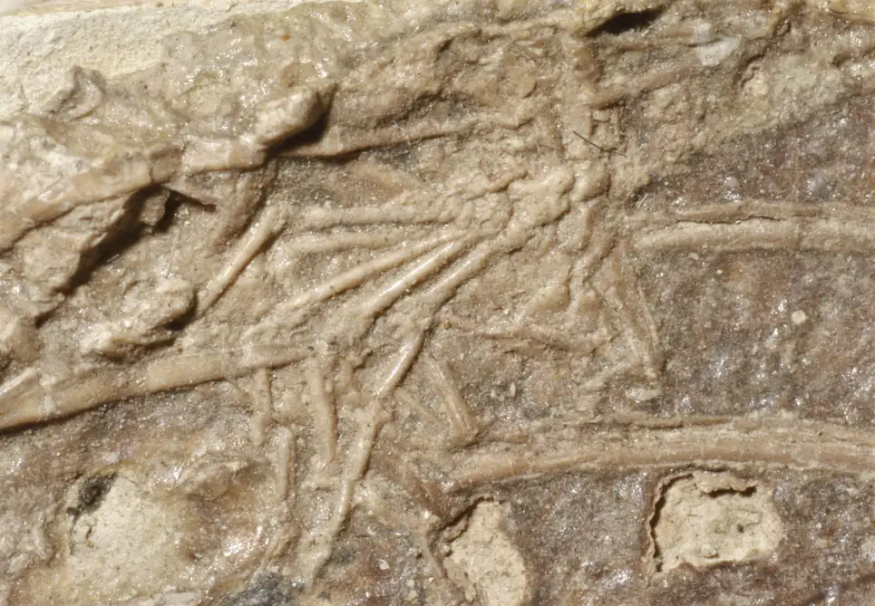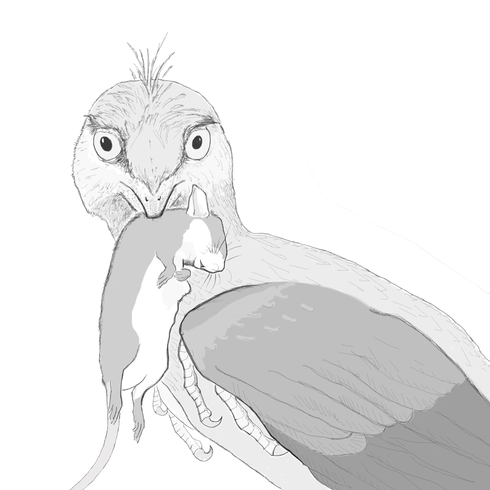Scientists reexamining a type of small four-winged dinosaur known as Microraptor zhaoinus have discovered a fossilized mammal foot inside the dinosaur's stomach, providing the first solid evidence that dinosaurs ate mammals. Previous specimens of Microraptor zhaoinus have been found containing ancient birds, fish, and lizards, indicating that this particular species of dinosaur was a diverse predator. The researchers who made the discovery have published their findings in the Journal of Vertebrate Paleontology.
According to Hans Larsson, a paleontologist at McGill University and the lead author of the study, the discovery of a mammal in the stomach of Microraptor zhaoinus demonstrates the varied diet of this small feathered dinosaur. Larsson stated in an email to Gizmodo that the inclusion of mammals in the dinosaur's menu shows that it was a generalist predator, rather than being specialized in its diet.

Winged Microraptor Dinosaur
Microraptor zhaoinus lived in trees during the early Cretaceous period and has been found in the Jehol Biota, a fossil-rich region in northeast China. The well-preserved fossils found in this region provide valuable insights into the anatomy of dinosaurs and the ecological roles of various animals.
Microraptor is believed to have lived in trees and glided through the forests of the Cretaceous period, searching for food on branches and the ground. The newly studied specimen is the holotype, which means it was the first of its species to be discovered and named. It was only recently reexamined after its original discovery in 2000. The new analysis revealed the presence of a mammalian foot inside the dinosaur, which is a highly unusual find.
The researchers were unable to identify the specific mammal species, but the presence of the foot inside the Microraptor allowed them to understand its ecological role and its predators. According to Stephanie Drumheller-Horton, a paleontologist at the University of Tennessee, Knoxville who was not involved in the recent study, "gut contents" or the preserved remains of an animal's last meal are valuable indicators of its diet, but they are often rare and may not necessarily represent the animal's typical diet.

ALSO READ : Well-Preserved Hadrosaur Skin Unlocked, Suggesting New Explanation for How Dinosaurs Could Be Mummified

Preserved Last Meal
However, Drumheller-Horton notes that Microraptor appears to be an exception to this rule, with multiple well-preserved specimens containing different last meals. Together, these specimens suggest that this small theropod dinosaur was not particular about its food and ate a wide variety of small animals in its environment.
The mammal foot found in the stomach of Microraptor does not belong to a distant human ancestor, but rather is similar in morphology to ancient species of early mammals such as Sinodelphys, Yanoconodon, and Eomaia, which resembled opossums or rodents. The foot belonged to a creature about the dimensions of a rat. According to the team's analysis, the mammal was not a skilled climber, suggesting that Microraptor may have occasionally descended to the forest floor to feed.
Larsson stated that the mammal foot found in the stomach of a Microraptor was swallowed whole and it is not known how much of the mammal was consumed. However, there were also several other unidentified bones in the rib cage around the foot, leading Larsson to believe that more of the mammal was eaten. It is not clear whether the feathered dinosaur hunted and killed the mammal or if it scavenged the body. The Jehol Biota, a fossil-rich region in northeast China, has provided a wealth of information about the animals and plants of the Cretaceous period, and further discoveries will likely provide more insights into the food habits of dinosaurs and other animals during this time.
RELATED ARTICLE : Well-Preserved Ice Age Puppy Ate a Woolly Rhino For Its Last Meal Before Species Became Extinct 14,000 Years Ago
Check out more news and information on Paleontology in Science Times.












